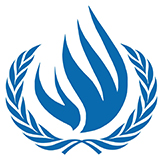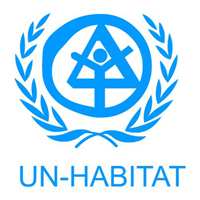Traumatic injury mortality in the Gaza Strip from Oct 7, 2023, to June 30, 2024: a capture–recapture analysis
Summary
Mortality among civilians is a key metric by which to asses a conflict’s conduct and its public health consequences. The Palestinian Ministry of Health (MoH) in the Gaza Strip had achieved good accuracy in mortality documentation, with under-reporting estimated at 13%. However, since October 2023, the quality of MoH mortality data appeared to deteriorate, as indicated by increasing numbers of unidentified decedents (i.e., no name or other unique identifiers). Israeli military ground operations and
attacks on health-care facilities severely hampered MoH’s ability to record deaths electronically. These
challenges compelled the MoH to rely on less structured data collection modalities, particularly when hospitals were under siege or experiencing telecommunication blockades. This might have led to incomplete and geographically biased reporting, as seen in other conflict zones where prolonged warfare complicates casualty tracking.
A range of estimates of mortality in the Gaza Strip since October 2023 have been published by
MoH, the UN Office for the Coordination of Humanitarian Affairs (OCHA), the International Committee of
the Red Cross, Euro-Mediterranean Human Rights Monitor, Armed Conflict Location & Event Data Project (ACLED) and claims by Israel’s Prime Minister.
Lancet researchers used a three-list capture-recapture analysis, using MoH data and social media obituaries. After imputing missing values, they fitted alternative generalized linear models to the three lists` overlap structure, with each model representing different possible dependencies among lists and including covariates predictive of the probability of being listed. They averaged the models to estimate the true number of deaths in the analysis period (7 October 2023–30 June 2024). They then compared resulting annualized age-specific and sex-specific mortality rates with mortality in 2022.
The researchers estimated 64,260 deaths due to traumatic injury during the study period, suggesting the Palestinian MoH under-reported mortality by 41%. The annualized crude death rate was 39.3 per 1,000 people, representing a rate ratio of 14.0, compared with all-cause mortality in 2022, even when ignoring non-injury excess mortality. Women, children (aged <18 years), and older people (aged ≥65 years) accounted for 16,699 (59.1%) of the 28,257 deaths for which age and sex data were available.
The findings show an exceptionally high mortality rate in the Gaza Strip during the period studied. These results underscore the urgent need for interventions to prevent further loss of life and illuminate important patterns in the conduct of the war.
Download the study:
Zeina Jamaluddine, Hanan Abukmail, Sarah Aly, Oona M R Campbell and Francesco Checchi, “Traumatic injury mortality in the Gaza Strip from Oct 7, 2023, to June 30, 2024: a capture–recapture analysis,” The Lancet (9 January 2025).
Image: Graph showing cumulative number of deaths from traumatic injury reported by the Palestinian Ministry of Health over time, by source. Source: The Lancet.
| Themes |
| • Armed / ethnic conflict • Indigenous peoples • Local • People under occupation • Regional • Research |














